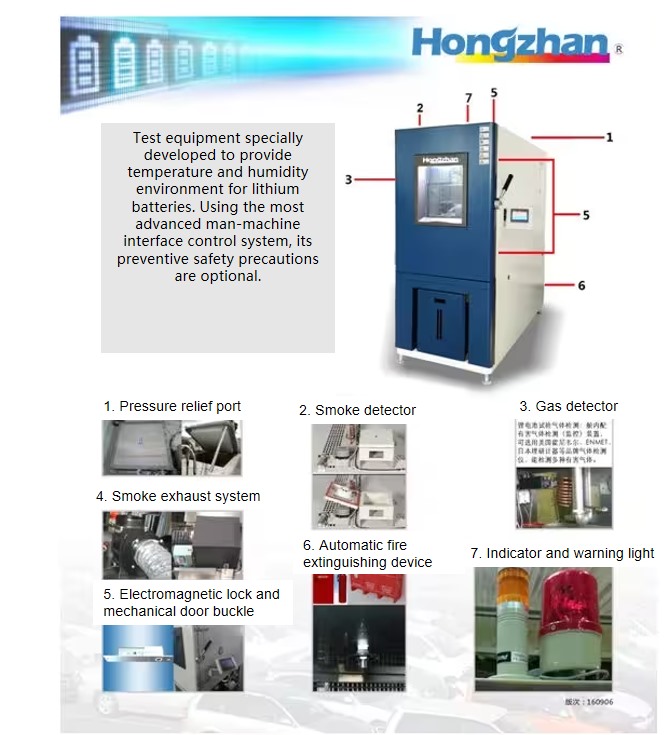What are the High and Low Temperature Explosion-proof Devices?
Due to the particularity of the test product, during the test process, the test product may produce a large amount of gas in the high temperature or high pressure state, which may catch fire and explode. In order to ensure production safety, preventive safety protection devices can be used as optional equipment. Therefore, the high and low temperature test chamber needs to add special devices - explosion-proof devices when testing these special products. Today, let's talk about what are the high and low temperature explosion-proof devices.
1. Pressure relief port
When the air generated in the test chamber increases and the gas pressure in the chamber reaches a threshold, the pressure relief port automatically opens and releases the pressure outwards. This design ensures that when the system overpressure, the pressure can be released, thereby preventing the system from collapsing or exploding. The location and number of pressure relief ports are determined according to the specific fire extinguishing system design and application requirements.
2. Smoke detector
The smoke detector mainly realizes fire prevention by monitoring the concentration of smoke. The ionic smoke sensor is used inside the smoke detector. The ionic smoke sensor is a kind of sensor with advanced technology and stable and reliable operation. When the concentration of smoke particles in the chamber is greater than the threshold, it will sense and alarm to remind the production to stop operation and achieve the effect of preventing fire.
3. Gas detector
A gas detector is an instrument that detects the concentration of a gas. The instrument is suitable for dangerous places where combustible or toxic gases exist, and can continuously detect the content of the measured gas in the air within the lower explosive limit for a long time. The gas diffuses into the working electrode of the sensor through the back of the porous film, where the gas is oxidized or reduced. This electrochemical reaction causes a change in the current flowing through the external circuit, and the gas concentration can be measured by measuring the size of the current.
4. Smoke exhaust system
The air inlet of the pressurized fan is directly connected with the outdoor air. In order to prevent the outdoor air from being polluted by smoke, the air inlet of the supply fan should not be located at the same level as the air outlet of the exhaust machine. A one-way air valve should be installed on the outlet or inlet air pipe of the fan. Mechanical smoke exhaust system adopts smoke exhaust fan for mechanical exhaust air. According to relevant information, a well-designed mechanical smoke exhaust system can discharge 80% of the heat in the fire, so that the temperature of the fire scene is greatly reduced, and it has an important role in the safety of personnel evacuation and fire fighting.
5. Electromagnetic lock and mechanical door buckle
The electromagnetic lock uses the electromagnetic principle to achieve the fixing of the lock body, without the need to use a mechanical lock tongue, so the electromagnetic lock does not exist the possibility of mechanical lock tongue damage or forced destruction. The electromagnetic lock has a high anti-impact strength, when the external impact force acts on the lock body, the lock body will not be easily destroyed, and there will be certain protective measures when the explosion occurs.
6. Automatic fire extinguishing device
The automatic fire extinguishing device is mainly composed of four parts: detector (thermal energy detector, flame detector, smoke detector), fire extinguisher (carbon dioxide extinguisher), digital temperature control alarm and communication module. Through the digital communication module in the device, the real-time temperature changes, alarm status and fire extinguisher information in the fire area can be remotely monitored and controlled, which can not only remotely monitor the various states of the automatic fire extinguishing device, but also master the real-time changes in the fire area, which can minimize the loss of life and property when the fire occurs.
7. Indicator and warning light
Communicate equipment status or transmission status by visual and acoustic signals to machine operators, technicians, production managers and plant personnel.
